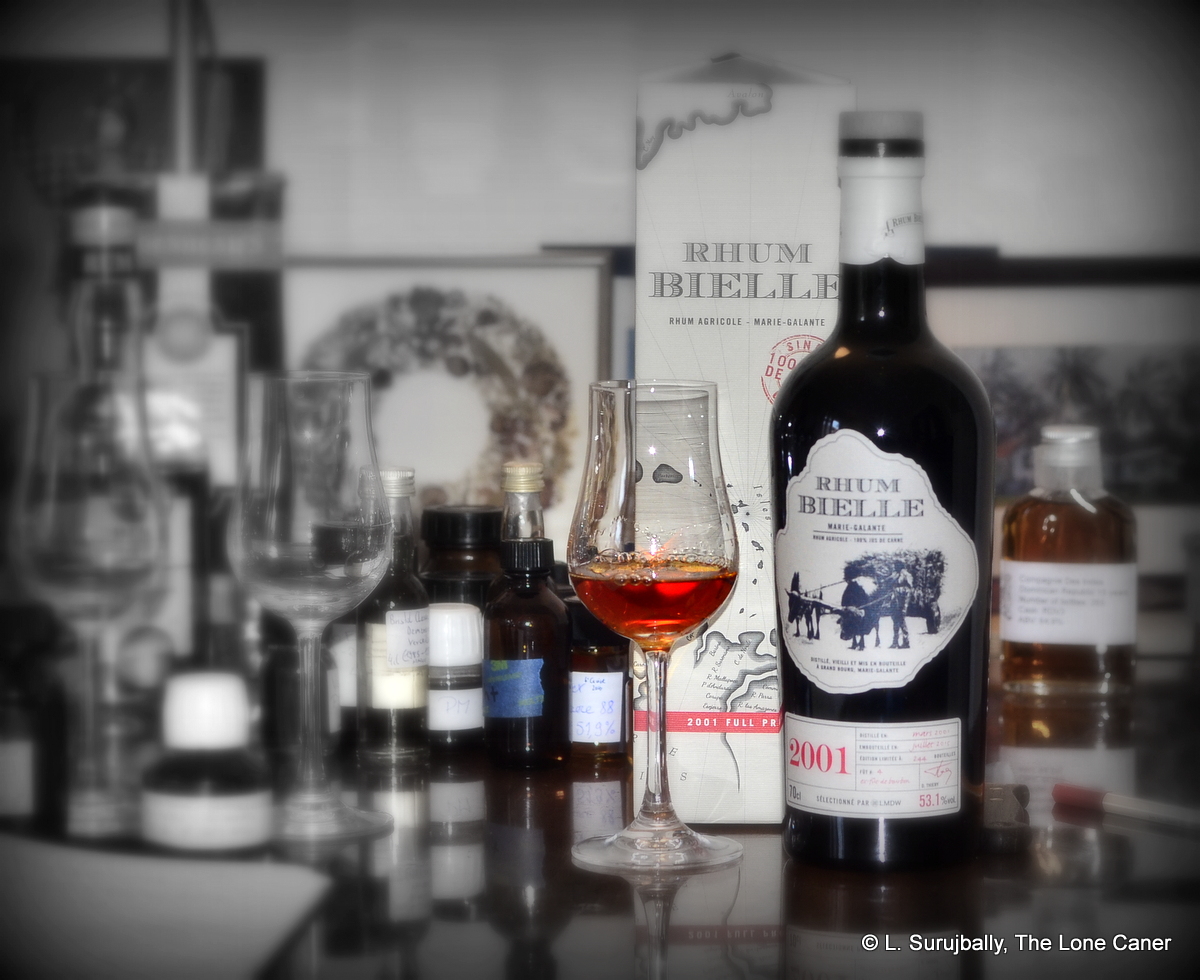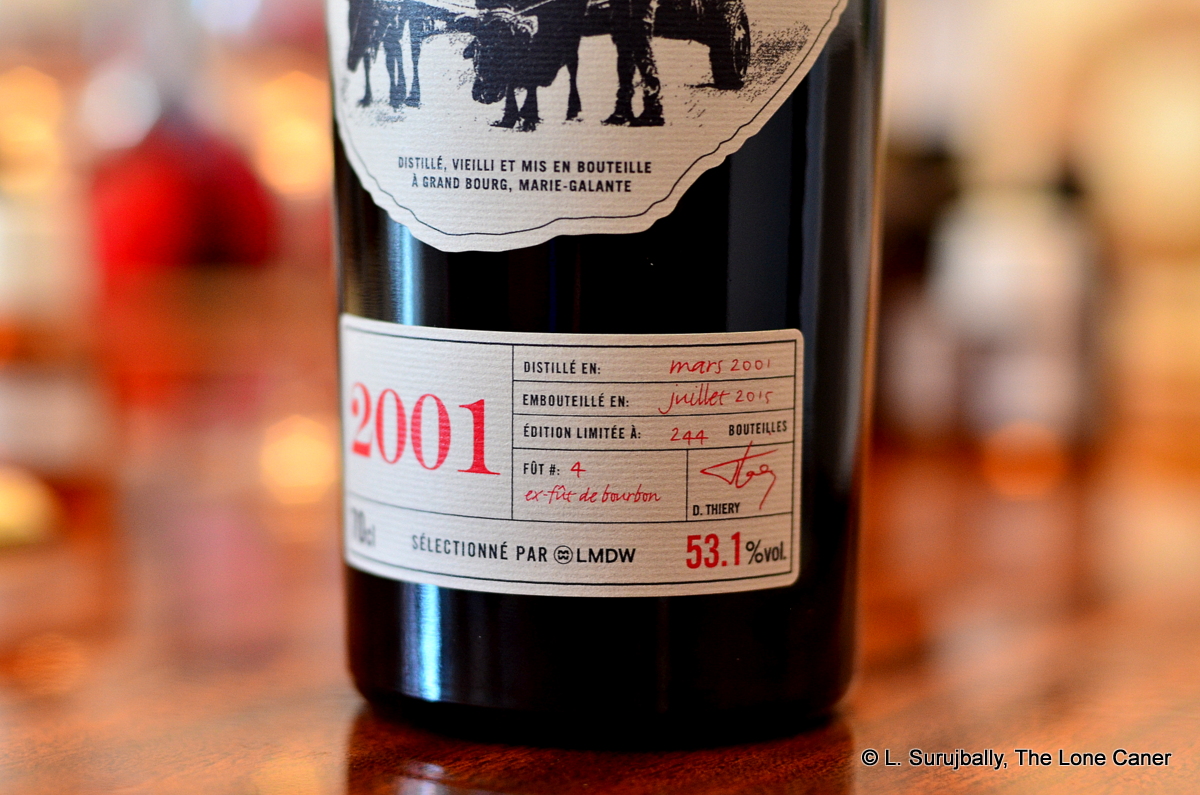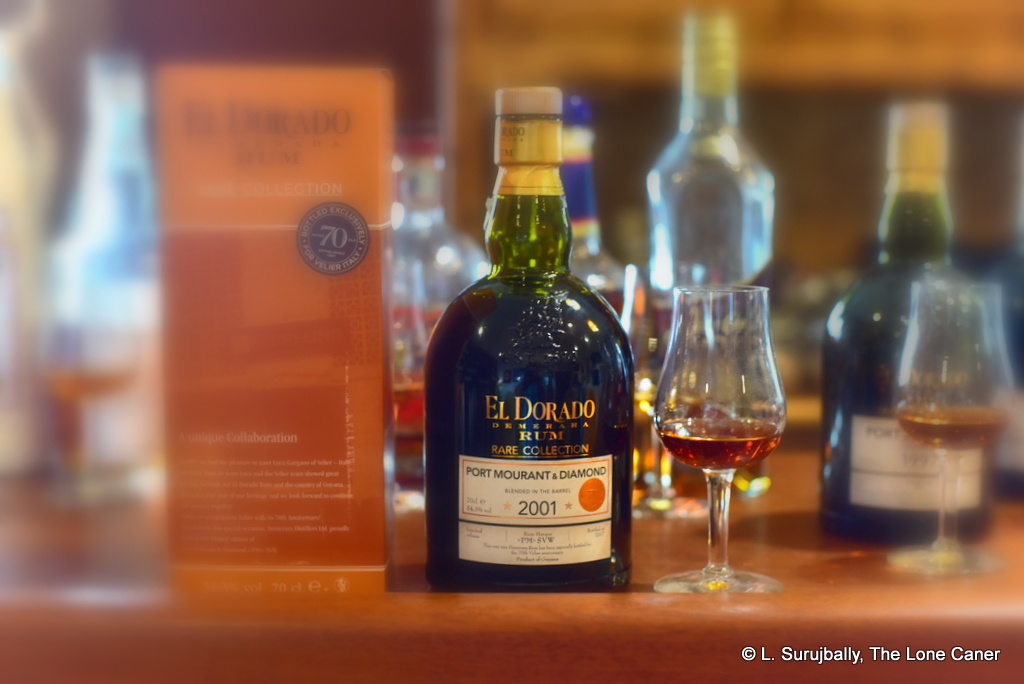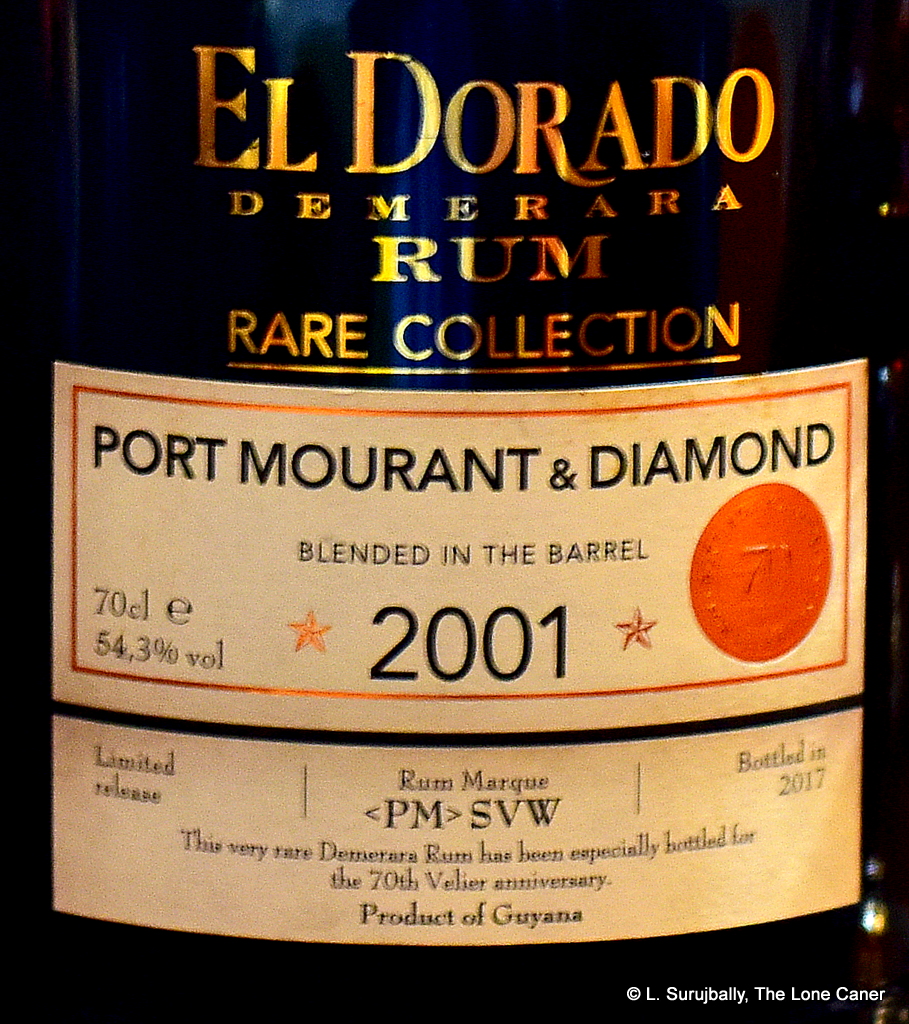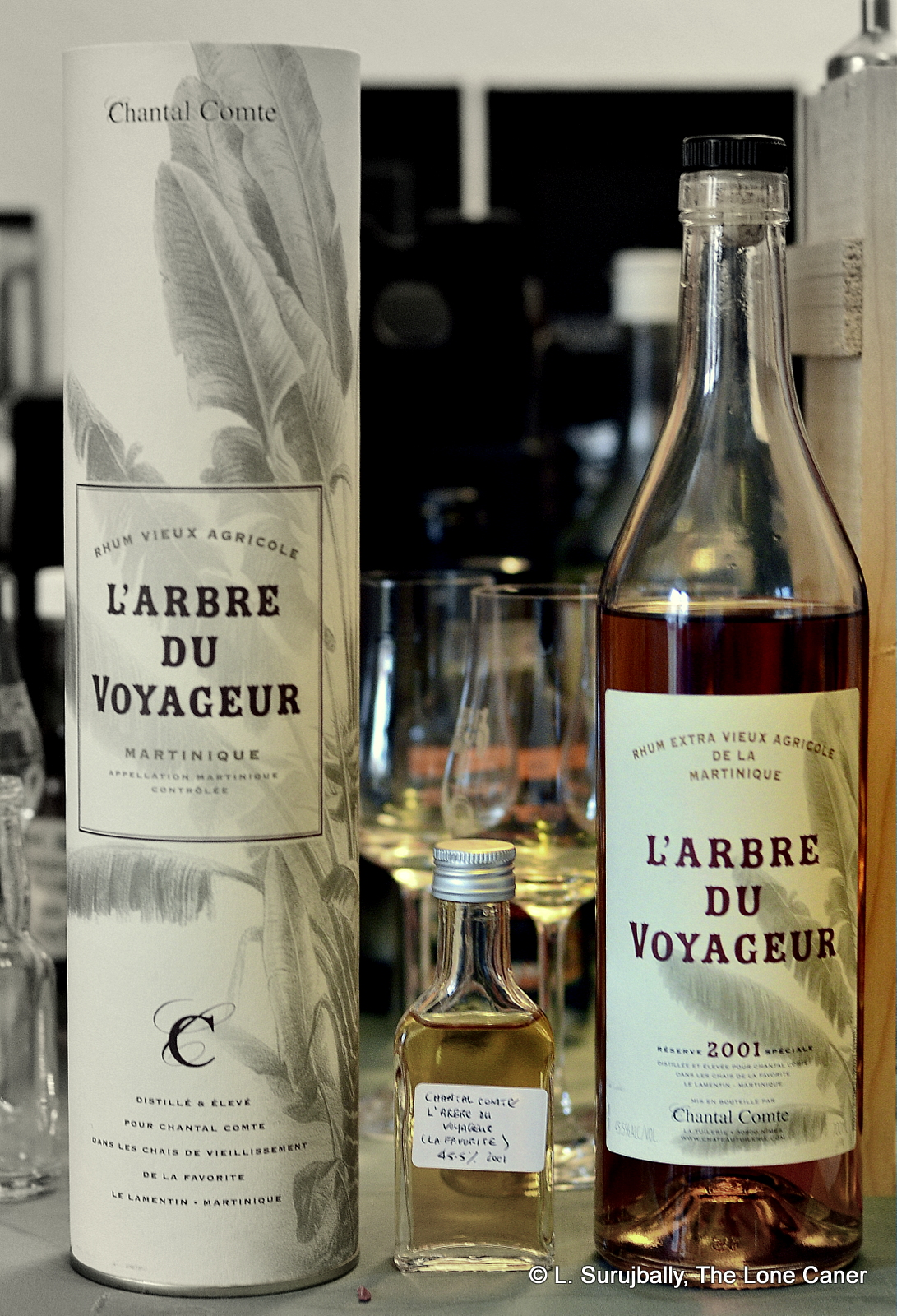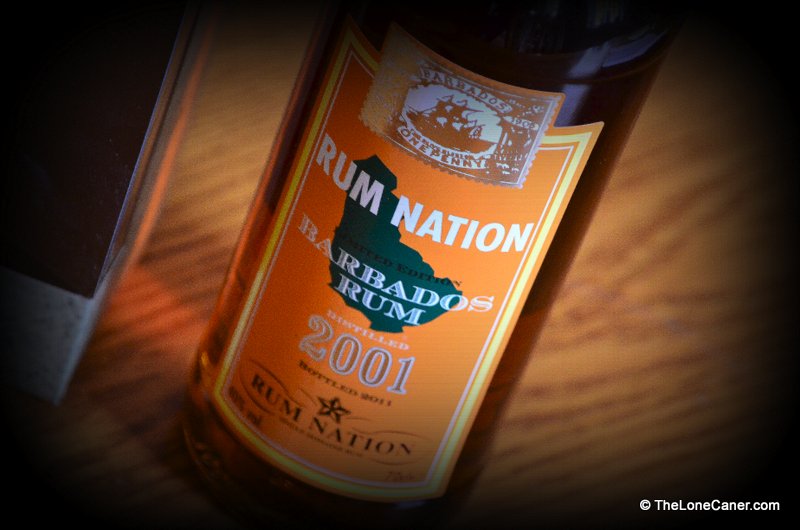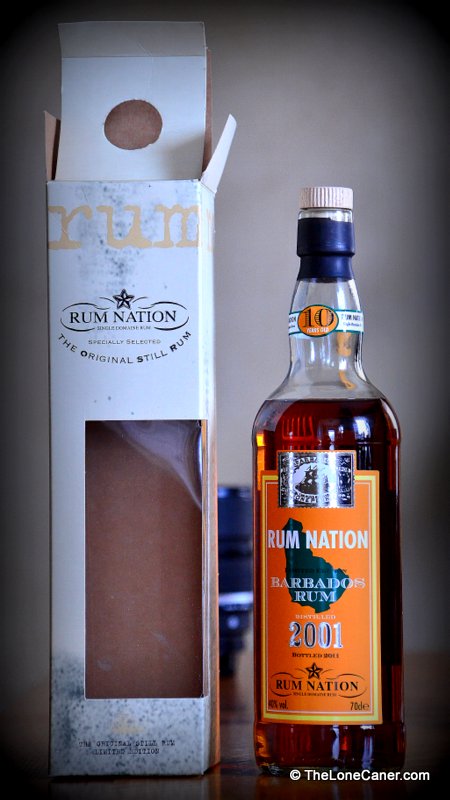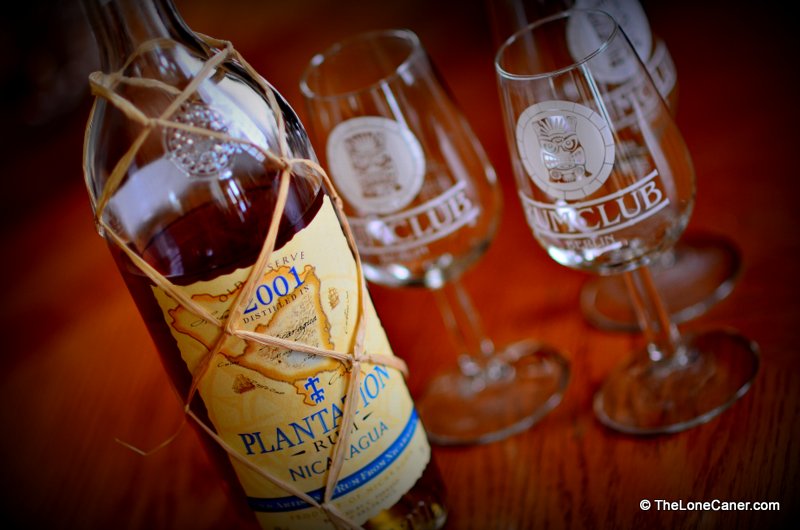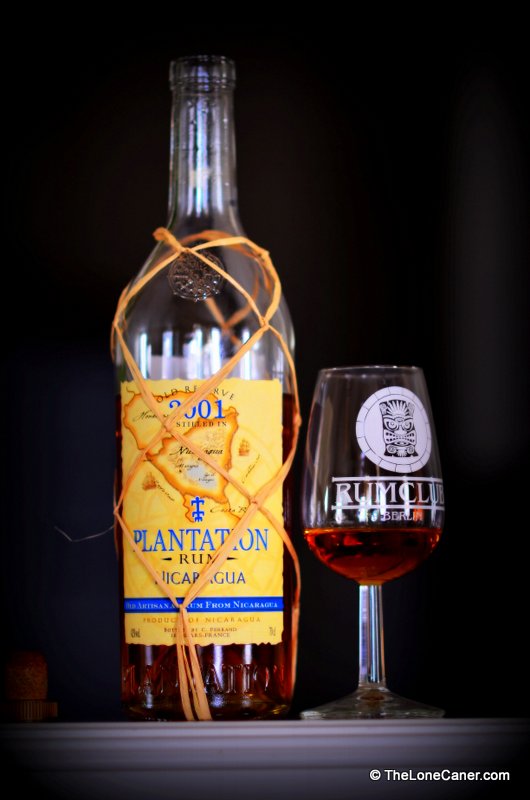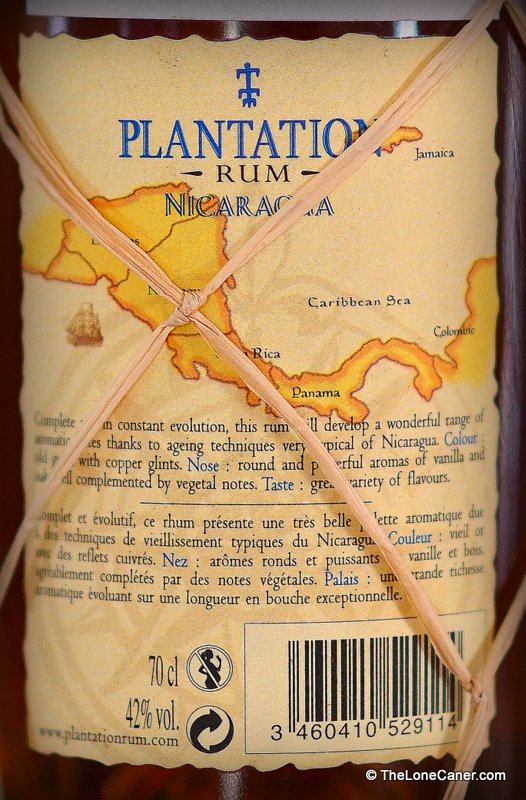A.D.Rattray. Gordon & MacPhail. Berry Bros. & Rudd. Cadenhead. The names evoke whisky, empire, Scotland and the early days of the Rum Renaissance through which we are still living. For the longest while, the occasional rums issued by these long-established companies, some of which are centuries old, allowed the diligent and solitary rumhound to taste what rums could be, were made to be, and kept the spark alive. Because throughout the second half of the 20th century, they were among the few bottlers of rum who eschewed the movement to light rums (i.e., chase Bacardi, copy vodka) and laid the foundation for the famed indies who came later – Samaroli, Bristol Spirits, Moon Imports, Veronelli, Velier, Rum Nation and so many others. They did so by bottling single barrel limited edition offerings, often at cask strength, and even providing marques, provenance and all sorts of other details we now take for granted (though even then, it was rarely enough).
While A.D. Rattray issued various countries’ rums in a consistent sort of series (their Caroni 1997 was one of the first of its kind I ever tried), G&M was only an occasional bottler, while BBR had the distinction of introducing us to Fiji, Foursquare and an epic 1975 Demerara way before we knew these were must-haves. Cadenhead however, took it in a different direction: alone among these early bottlers they created three separate lines of rums: in order of increasing value they were and are the Caribbean blends, the Green Label Series, and the Dated Distillations (see below for a more in-depth discussion) – and the last one is the one that excites more avarice and grail quests than just about any other bottler unless it’s the early Jamaican and Guyanese releases of Rum Nation, or the initial bottlings of Velier.
Some of the DD series were standard indie bottlings – middle aged, middle strength, from well known distilleries. Barbados (including “Blackrock”), Trinidad, Guyana, Jamaica were the regulars, with others from Cuba, Fiji, Belize, Brazil, Guadeloupe, Nicaragua…even a single youngish 70% pot still release from St Lucia. Most were distilled during and after the 1990s…but their real unicorns were and are the very old ones: a 1974 30YO Uitvlugt, a 1974 19YO Longpond, and a 1971 22YO Enmore, and a bunch of 1960s Uitvlugts and Port Mourants that are rarer to see than Luca without a smoke or a sweater. Even on auctions you won’t find these very often and if you do you can be sure you won’t be able to afford them.
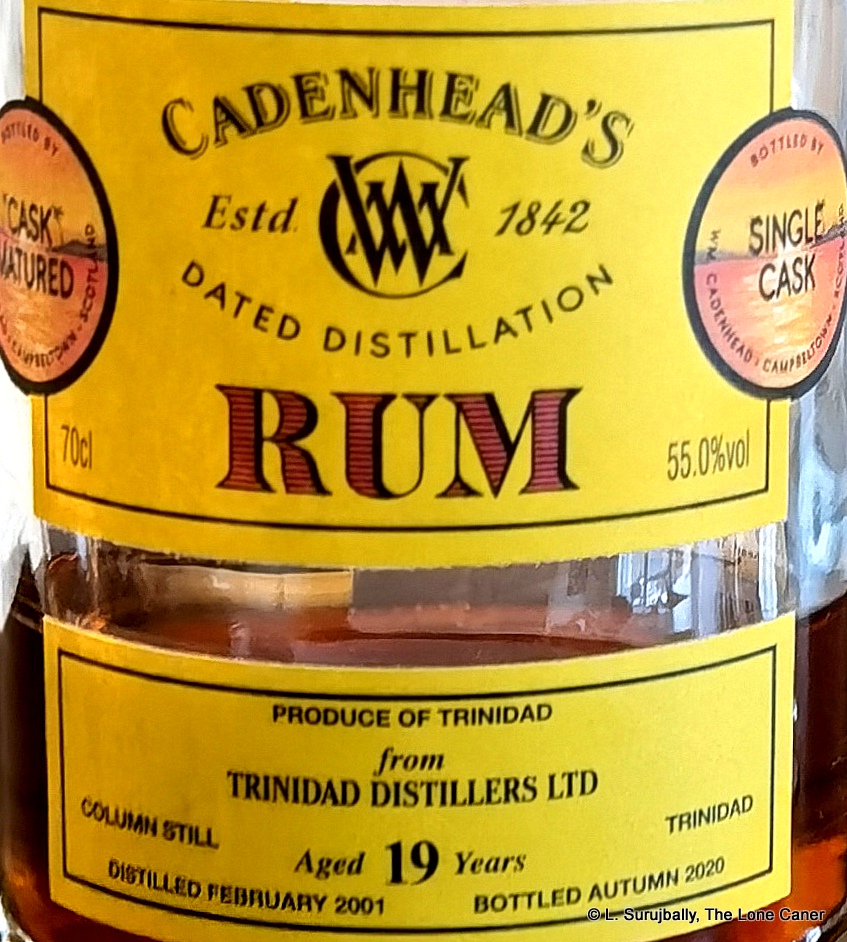 Which brings me to today’s rum. On the surface, it’s actually not that impressive, and I’m genuinely not trying to be elitist or anything, just clear: when one hears of a rum from the Trinidad Distillery, column still, 19 years old, from 2001…well, one hardly feels the fires of avarice burning in the cockles of one’s heart – because aside from Caroni and maybe Fernandes and 10-Cane, is there anything “serious” coming out of Trinidad, or Angostura? There are 294 bottles in play, at 55% and let’s face it, in these days of multiple indies pushing out product from Caribbean estates’ pot stills lovingly tended in distilleries with oodles of history, this is a rum that fades into the middle distance. A good rum, you tell yourself, but hardly a must have.
Which brings me to today’s rum. On the surface, it’s actually not that impressive, and I’m genuinely not trying to be elitist or anything, just clear: when one hears of a rum from the Trinidad Distillery, column still, 19 years old, from 2001…well, one hardly feels the fires of avarice burning in the cockles of one’s heart – because aside from Caroni and maybe Fernandes and 10-Cane, is there anything “serious” coming out of Trinidad, or Angostura? There are 294 bottles in play, at 55% and let’s face it, in these days of multiple indies pushing out product from Caribbean estates’ pot stills lovingly tended in distilleries with oodles of history, this is a rum that fades into the middle distance. A good rum, you tell yourself, but hardly a must have.
I imagine that a tyro nosing this for the first time with no advance notice must feel something like us newbs walking into that first John Wick movie without any forewarning. The sheer kinetic energy of that fight in Wick’s house is emblematic of the entire experience with the TDL 2001 because the initial nose is, in short, simply incredible. It’s rich, it’s deep and it seems to go on forever. It smells darkly tawny, Demerara-like, with ripe plums, prunes and bags of red cherries, cranberries, raisins and (wtf?) even a fusel oil background, a sort of medicinal iodine, or peat. In between all that waft hints of more delicate florals, dates, caramel, molasses, ginger, cinnamon, pine needles and bon-bons, all impacting the schnozz like a playful lion batting your face. For 55% ABV, the intensity and clarity of the aromas is just off the scale.
Oh and the taste isn’t lagging by any stretch either. In fact, it’s racing to get ahead. It’s really quite inspiring how much is stuffed into the profile of what is ostensibly a rum of no great shakes. It opens with hot tar and rubber, the hot smoky smell of a trust fund Lambo doing doughnuts in the Walmart parking lot, and then the fruits start coming with a marching band alongside. Prunes, overripe cherries, plums, blackcurrants, cranberries, pineapples, strawberries, followed by stewed apples, molasses and newly polished leather. And the spices, there’s plenty of those – ginger, vanilla, cardamom, sandalwood, even a taste of chamomile. It’s a veritable cornucopia and left me wondering in baffled astonishment what on earth they fed this thing before releasing it. Even the finish showed something of this richness and pungency, closing things off with dates, sweet balsamic vinegar (the kind with a fig infusion), lychees and overripe cherries and even a last touch of peatiness. It’s got so much going on that it becomes the sort of rare beast you have to go back to at least twice to really nail down.
 It should not work as well as it does, yet it does. The depth is startling, the complexity completely unreal and it is clearly a whisky lover’s wet dream (as evidenced by the amount of anoraks who waxed rhapsodical about it after the fact). Quite frankly I have no idea how this has escaped notice or review all these years and am simply happy I managed to snag some. The only thing I can say with some surety and personal conviction about it, is that TDL / Angostura has got to have a bunch of Caroni barrels squirrelled away and salt some of their best rums with them, because that depth, that power of aroma and palate, surely comes from more than just an anonymous industrial still. It is perhaps no accident that so many positive notices have attended TDL’s 2002 “Flag Series” Trinidad rum that Velier issued this year, where similar surmises have been raised.
It should not work as well as it does, yet it does. The depth is startling, the complexity completely unreal and it is clearly a whisky lover’s wet dream (as evidenced by the amount of anoraks who waxed rhapsodical about it after the fact). Quite frankly I have no idea how this has escaped notice or review all these years and am simply happy I managed to snag some. The only thing I can say with some surety and personal conviction about it, is that TDL / Angostura has got to have a bunch of Caroni barrels squirrelled away and salt some of their best rums with them, because that depth, that power of aroma and palate, surely comes from more than just an anonymous industrial still. It is perhaps no accident that so many positive notices have attended TDL’s 2002 “Flag Series” Trinidad rum that Velier issued this year, where similar surmises have been raised.
But in the end, this is what I come down to: every now and then you come across a bottle – and it’s almost by unheralded happenstance – that is so surprising, so unexpected, so immeasurably good, that it simply overloads your circuits and leaves you grateful that even in this day and age you can still be amazed and that there still exist interesting, tasty, off-the-scale rums that make one happy to try some, and thankful to have the opportunity. For me, this is one of those.
(#1048)(93/100) ⭐⭐⭐⭐½
Other notes
- The three ranges of Cadenhead’s releases are:
- The cask strength, single-barrel Dated Distillation series with a three- or four-letter identifier and lots of detail on source and age; I submit these are probably the best and rightly the most sought-after rums from the company (aside from a 1939-distilled Green Label from Ago). The only question usually remaining when you get one, is what the letters stand for.
- The Green Label series; these are usually single-country blends, sometimes from multiple distilleries (or stills, or both), mostly from around the Caribbean and Central/South America; a few other countries have been added in the 2020s. Here you get less detail than the DDs, mostly just the country, the age and the strength, which is always 46% ABV. They had puke yellow labels with green and red accents for a long time, but now they’re green for real, as they had been back in the beginning.
- Classic Blended Rum; a blend of Caribbean rums, location never identified, age never stated (anywhere), usually bottled at around 50% ABV. You takes your chances with these, and just a single one ever crossed my path.
- Strictly speaking there is a fourth type sometimes referred to as a “Living Cask” which is a kind of personalized shop-by-shop infinity bottle. I’ve only tried one of these, though several are supposedly in existence.

